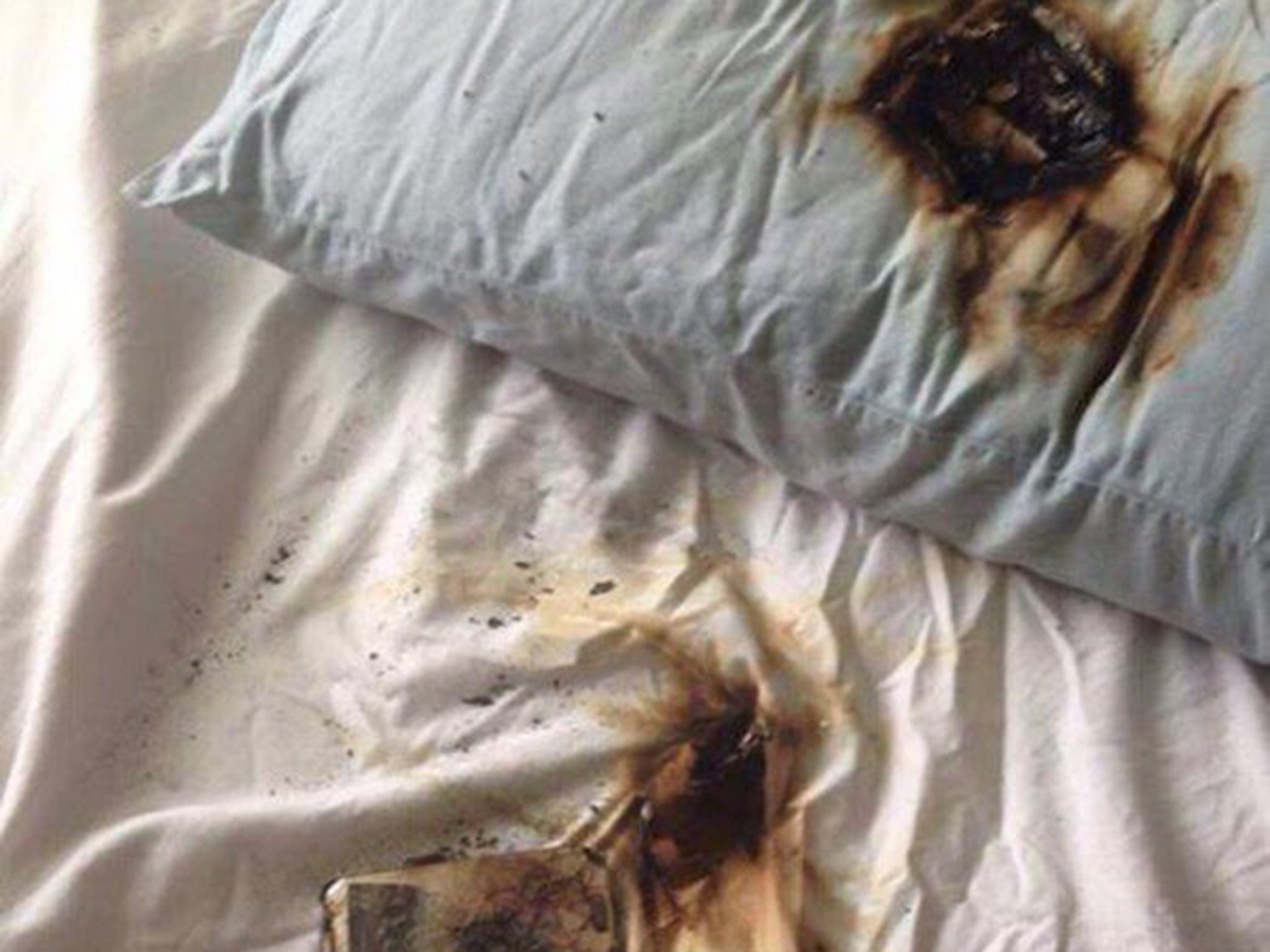The pictures that show why you should never charge your phone under your pillow
Images revealed by NYPD show the practice represents a serious fire risk

Your support helps us to tell the story
From reproductive rights to climate change to Big Tech, The Independent is on the ground when the story is developing. Whether it's investigating the financials of Elon Musk's pro-Trump PAC or producing our latest documentary, 'The A Word', which shines a light on the American women fighting for reproductive rights, we know how important it is to parse out the facts from the messaging.
At such a critical moment in US history, we need reporters on the ground. Your donation allows us to keep sending journalists to speak to both sides of the story.
The Independent is trusted by Americans across the entire political spectrum. And unlike many other quality news outlets, we choose not to lock Americans out of our reporting and analysis with paywalls. We believe quality journalism should be available to everyone, paid for by those who can afford it.
Your support makes all the difference.The potentially dangerous effects of charging mobile phones under a pillow have been revealed in a series of photos released by New York police.
The four images shared by NYPD 33rd precinct show a destroyed phone next to a pillow with a large hole burned into it. The mattress is also stained and burned.
Posted on a Twitter account run by Deputy Inspector Wilson Aramboles, Commanding Officer of the precinct, the pictures were accompanied by the caption: “Don’t put your cellphone under a pillow when sleeping or when charging your device. Please share this tip and b safe!”
The four images were from various incidents – two of which occurred in the UK, according to the Daily Mail.
One was posted by Leicester resident Dwayne Blanchard, and another by Holly Hewett from Kent.
It had previously been claimed that charging mobile phones overnight, or charging them when the battery is not completely dead, could destroy the battery.
While that used to be true, developments in technology means it is no longer the case. Older phones and laptops contained Nickel Metal Hydride batteries, which could be damaged by charging them too much and never letting them drain.
The Lithium-ion batteries no used in gadgets do not have this problem – they ‘know’ when they are full, and will not keep charging past capacity.
Join our commenting forum
Join thought-provoking conversations, follow other Independent readers and see their replies
Comments